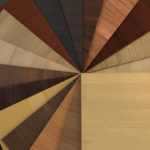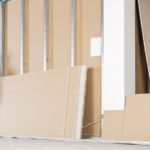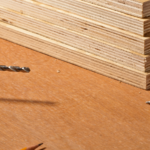How to Choose the Right Plywood for Your Project
- February 7, 2025
Introduction
Plywood is a versatile material used in furniture, interiors, and construction. However, with so many types available, selecting the right plywood for your project can be challenging. This guide will help you understand the key factors to consider when choosing plywood to ensure durability, aesthetics, and cost-effectiveness.
1. Determine the Purpose of Use
The first step is identifying the application:
- For Home Interiors & Furniture → MR (Moisture Resistant) or Commercial Plywood
- For Kitchens & Bathrooms → BWR (Boiling Water Resistant) Plywood
- For Outdoor & High Moisture Areas → BWP (Boiling Waterproof) or Marine Plywood
- For Structural Use → Hardwood Plywood
- For Decorative Finishing → Veneered or Laminated Plywood
2. Select the Right Plywood Type
Here’s a breakdown of the most common plywood types:
A. Commercial Plywood (MR Grade)
- Best for interior applications with low moisture exposure
- Ideal for wardrobes, furniture, paneling
B. BWR (Boiling Water Resistant) Plywood
- Suitable for moderate moisture-prone areas like kitchens and bathrooms
- More durable than MR plywood
C. BWP (Boiling Waterproof) or Marine Plywood
- 100% waterproof, designed for extreme moisture exposure
- Used in boats, exteriors, and bathrooms
D. Hardwood Plywood
- High-density wood for strength and durability
- Used in flooring, partitions, and heavy furniture
E. Softwood Plywood
- Lightweight and cost-effective
- Ideal for roofing, packaging, and temporary structures
F. Flexible Plywood
- Designed to bend easily for curved furniture and décor
- Used in decorative and artistic applications
3. Consider the Plywood Grade
Plywood quality is graded based on surface finish and core strength:
- Grade A: Premium quality, smooth surface, minimal defects (best for furniture & decorative use)
- Grade B: Minor surface imperfections but structurally strong (used in furniture backing, cabinets)
- Grade C & D: Rougher surface with more defects (ideal for structural applications)
For interior projects, A or B grade plywood is recommended, while C & D grade plywood is suitable for construction.
4. Check for Certifications & Quality Standards
To ensure quality, check for these certifications:
- ISI Mark (BIS 303 for MR/BWR, BIS 710 for BWP)
- E0/E1 Emission Standards (Low formaldehyde emissions)
- Boiling Water Proof Test (For Marine/BWP plywood)
5. Choose the Right Thickness
Plywood comes in various thicknesses. Select based on your needs:
- 6mm – 9mm → Wall paneling, ceilings, partitions
- 12mm – 16mm → Wardrobes, cabinets, shelves
- 18mm – 25mm → Structural work, flooring, kitchen countertops
6. Compare Plywood vs MDF vs Particle Board
If you’re confused between plywood and alternatives, here’s a quick comparison:
| Feature | Plywood | MDF (Medium Density Fiberboard) | Particle Board |
|---|---|---|---|
| Strength | ✅✅✅ | ✅✅ | ✅ |
| Water Resistance | ✅✅ | ❌ | ❌ |
| Cost | Medium | Low | Lowest |
| Best For | Furniture, Interiors | Decorative Panels | Temporary Furniture |
For durability and moisture resistance, plywood is the best choice.
7. Consider the Finish & Aesthetic Appeal
Choose from various finishes based on your design needs:
- Veneer Plywood – Natural wood finish for a premium look
- Laminated Plywood – Pre-finished with glossy or matte designs
- Raw Plywood – Requires external finishing like paint or polish
Conclusion
Selecting the right plywood depends on your project’s requirements—whether it’s furniture, interiors, construction, or decorative applications. By considering type, grade, thickness, certifications, and finishes, you can make a smart investment in high-quality plywood that lasts for years.
Looking for premium plywood solutions? Explore Ace Tuff for durable and high-performance plywood!





